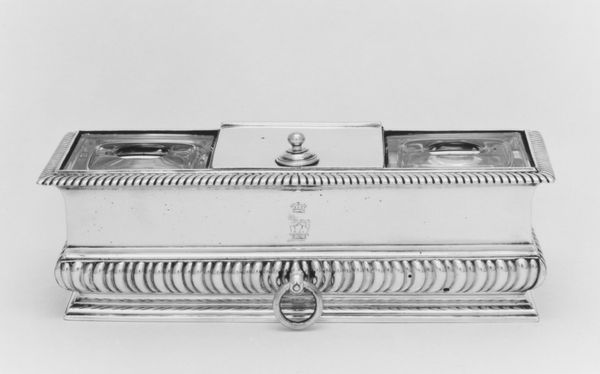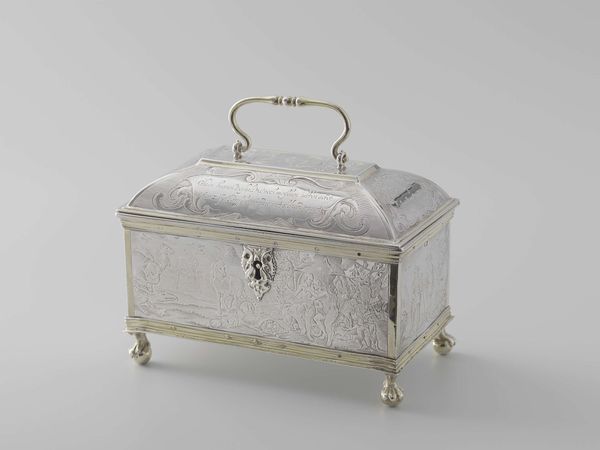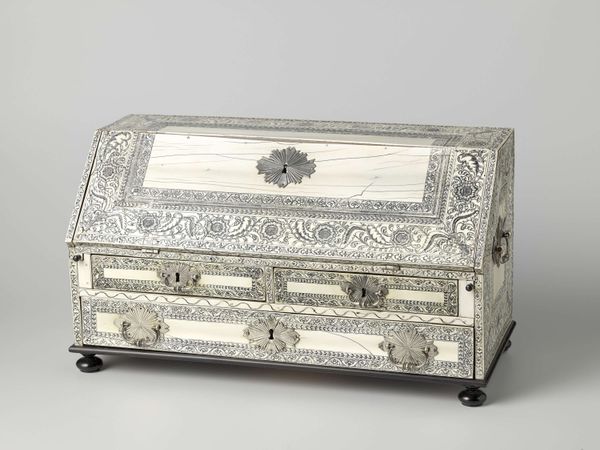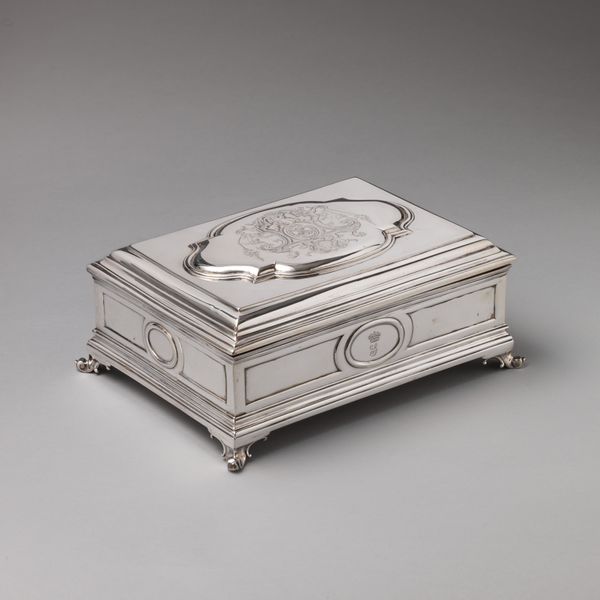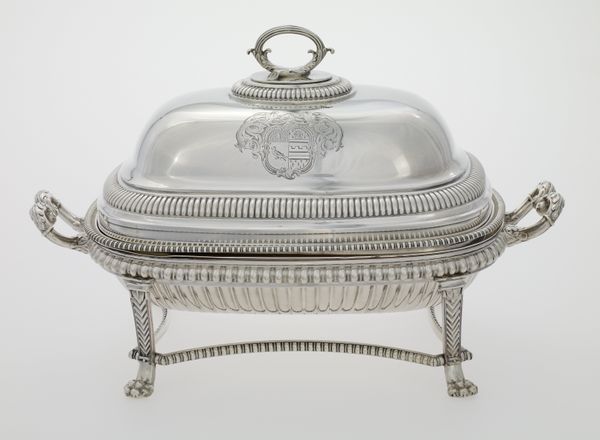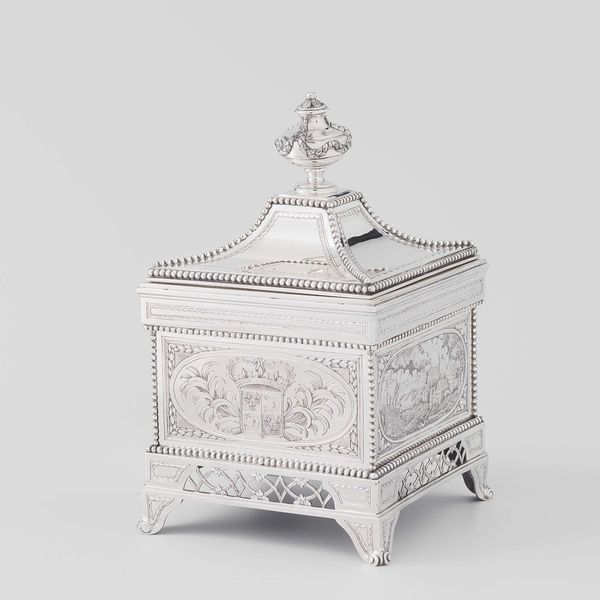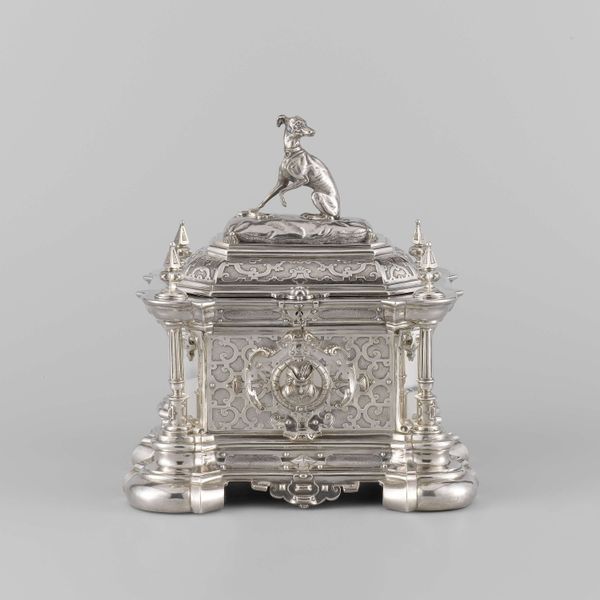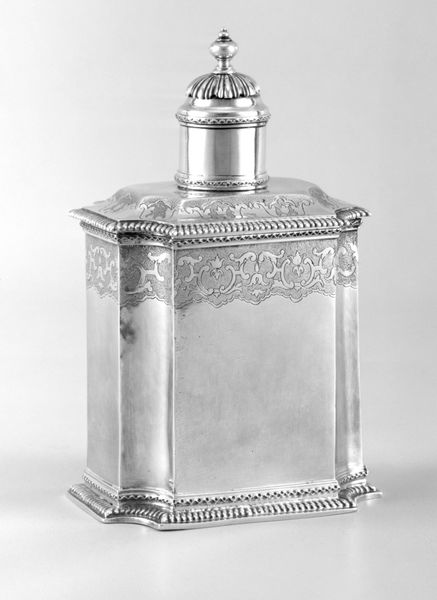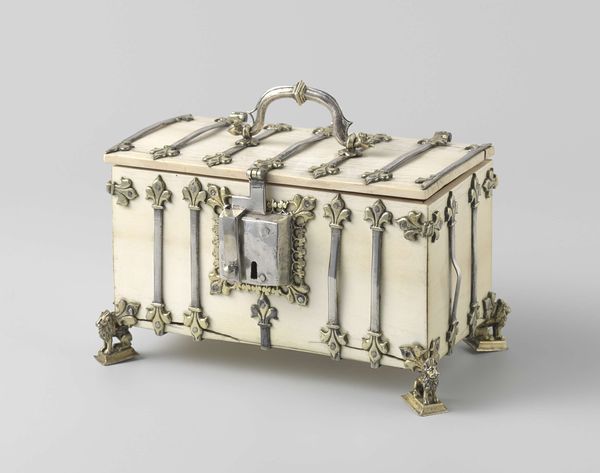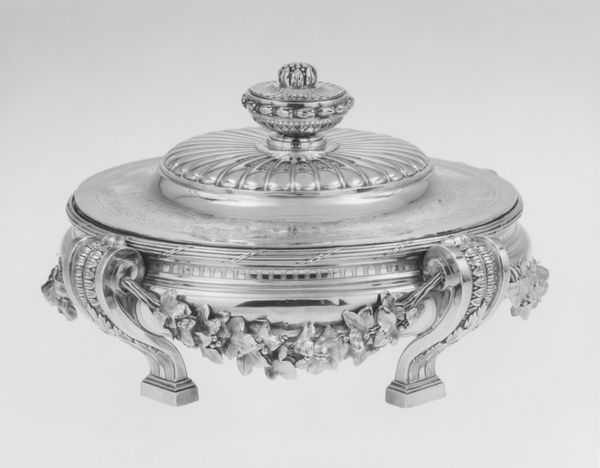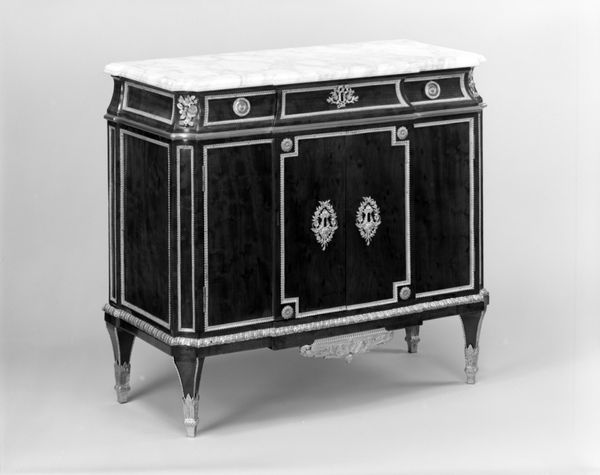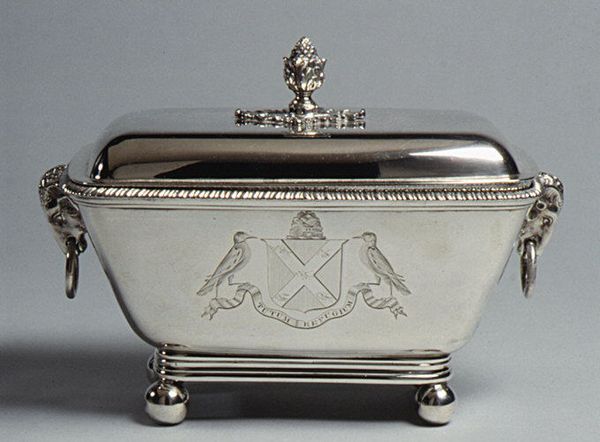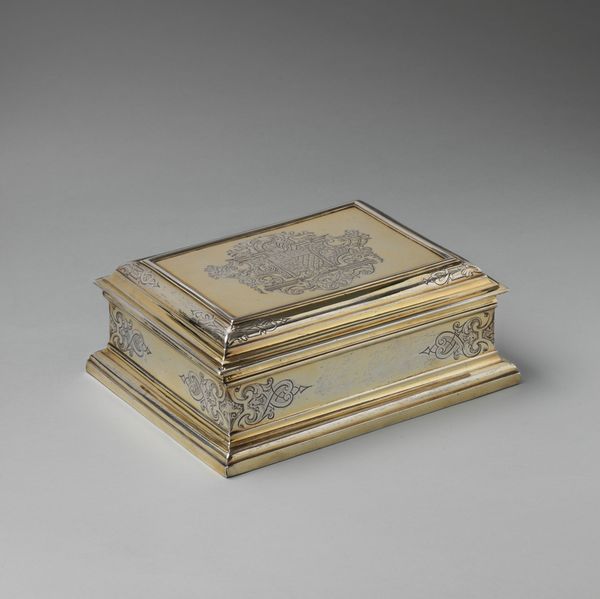
silver, metal, metalwork-silver, sculpture
#
silver
#
baroque
#
metal
#
metalwork-silver
#
sculpture
#
decorative-art
Copyright: Public Domain
Curator: I see in this silver Inkstand from 1726 an echo of societal hierarchy expressed through the intimate objects of daily life. Editor: My immediate feeling is cool formality. The rigid, rectangular shapes and polished surface convey a sense of distance. This isn’t something meant to be touched casually. Curator: Crafted by Samuel Lee, it’s currently housed at the Metropolitan Museum of Art. Observe the heraldic shield emblazoned on both the stand and the tray; these types of visual markers spoke volumes about status. Do they evoke any specific meaning? Editor: To me, the presence of the coat of arms, though beautifully executed, underscores the exclusive nature of literacy and power at the time. Who was this created for? And more importantly, who *wasn’t* it created for? Access to writing, and therefore to shaping narratives, was sharply limited. Curator: Indeed. In visual culture, emblems weren't merely decoration. The Baroque period leaned heavily on iconography to reinforce messages. Editor: And here, those messages were carefully curated. Silver itself was a status symbol; an ostentatious display. It highlights the stark inequalities between the literate elite and the masses. Think about the social unrest brewing at the time. Curator: I consider the containers, the bottles capped with those intriguing little spire-like stoppers. We can see them containing not just ink, but also pounce -- fine powder sprinkled to prepare parchment for receiving ink. This reveals the painstaking rituals around something as elemental as putting words to paper. It underlines the material labor that enabled elite expression. Editor: And how that labor was itself often exploited and hidden from view! We only see the polished product, never the hands that extracted, shaped, and perfected this piece. The symbolism here veils that uncomfortable truth, I think. Curator: An object like this speaks of control and curated display as much as functionality. Consider it as a microcosm of Baroque aesthetics. Editor: Right. Looking at it now, knowing that the power structures it embodies haven’t entirely disappeared, gives me a distinct chill. Curator: Yes, such objects become charged witnesses across centuries, speaking volumes beyond their intended uses.
Comments
No comments
Be the first to comment and join the conversation on the ultimate creative platform.
